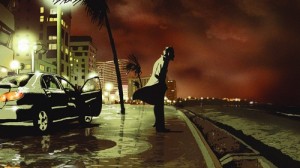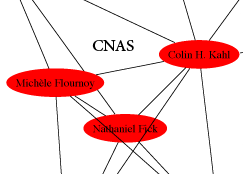I found Ari Folman’s Waltz with Bashir extraordinary, but I have no idea what it means to anyone but me. It’s an animated documentary about the Sabra and Shatila massacre, told from the point of view of the young Israeli soldiers who allowed outraged Phalangist militia to enter the Arab refugee camps and slaughter thousands. And it has a great soundtrack.
I rocked out, I cried, I was stunned by the sodium-yellow beauty of the dream sequences. It’s a beautiful piece of art, but it’s a piece of art about the complicity of Israelis in the massacre of Arab refugees. It is also a piece with reach: it won a Golden Globe and got nominated for an Oscar, and people all over the world saw it. This makes the film an opportunity for propaganda, or truth. So what is being said, and to whom?
I don’t know! I lack the context to even guess at the answers.
For me, personally, the film reads as an apology. I find it very tempting to see this as Israel coming to grips with what it did, and I think that perhaps this is something the world needs, a brave and necessary step in curtailing the cycle of war. But the film was screened in Israel too, in theaters full of Zionists. Did the audience cry with the weeping Muslims in the film’s final moments, or did they walk out, swearing George Bush-style that any film-maker not with us must surely be against us? And what did Arabs in Beirut think of the film, those who were allowed to see it at all?
It’s questions like this that make me realize I don’t understand anything about the people behind the Israeli-Arab conflict.
Just to prove my ignorance, I had guessed that the Israeli government would not be impressed, but it has actually been very supportive. The Israeli Foreign Ministry has been promoting the film, with the Israeli consul for media and public affairs in New York saying,
One of the challenges is that people in the world see Israel as responsible for what happened in Sabra and Shatila, and this movie shows that it was Lebanese who killed Palestinians.
Yeah. It also shows that it was the Israeli generals who engineered it, who allowed it to happen, who ordered flares fired during the night so that the Phalangists could see what they were doing.
But a government is not a people, and people differ widely. There had to be more than one reaction even among only “Israelis” or only “Arabs”, just as different Americans felt different things when they saw Fahrenheit 9/11. Traveling in Morocco, in Oman, in Indonesia and elsewhere I had to explain many times that America is not a uniform mass, that its people don’t necessarily agree with its government or even with each other. Yet our stereotypes are so ingrained that Waltz with Bashir immediately made me wonder what “the Israeli reaction” and “the Arab reaction” were. I had to stop myself from thinking in such fictional terms; lumping millions of people together implies a consensus that may not exist.
It is exactly these fictions of identity that allow a conflict to be perpetuated.
And so I want to know what this film meant to people alone in the theatre. I want to know what it meant to individual Israelis, Arabs, and others, confronted with something violent and sad. I want to know what they felt and thought before they turned to their neighbor to speak, before they read the reviews, before they listened to the official comments. The filmmaker wanted to say something, and it must start as a private conversation.
In principle I don’t believe movies can change the world, but I’m a great believer in their ability to form small bridges. (Ari Folman)

